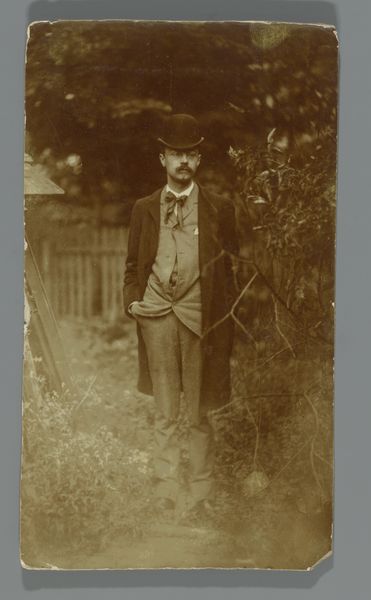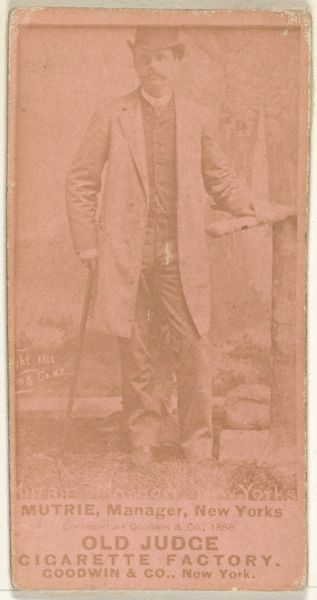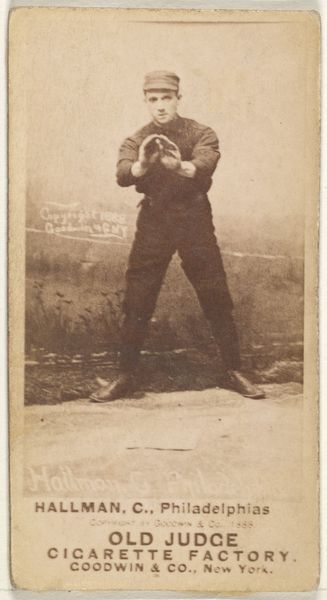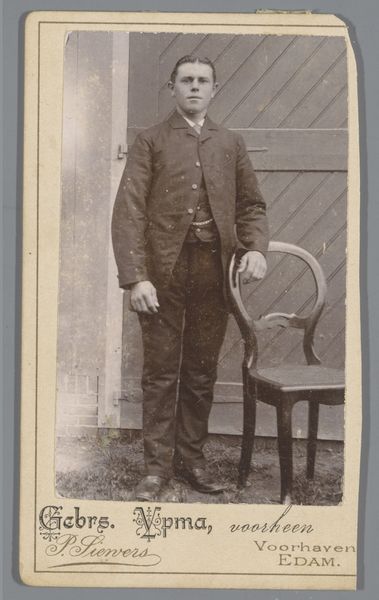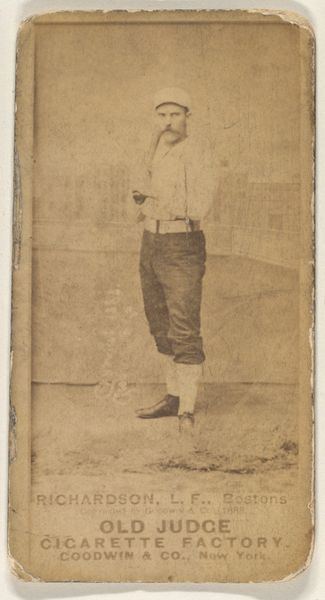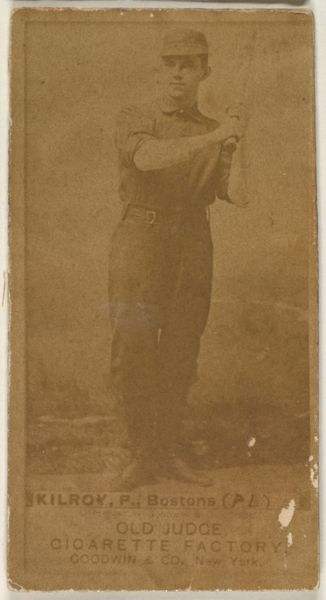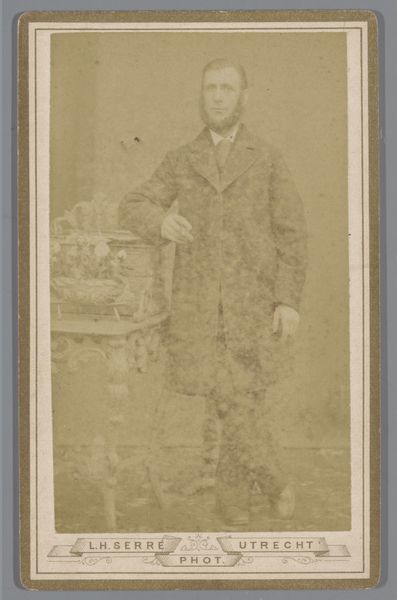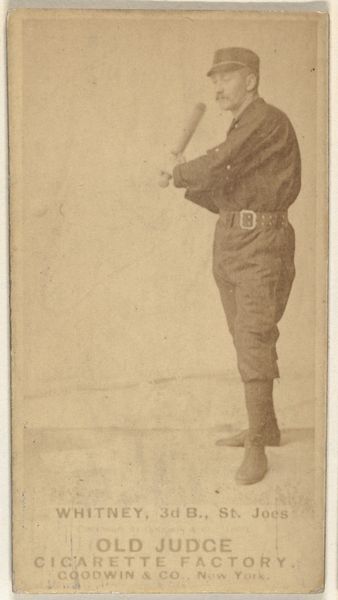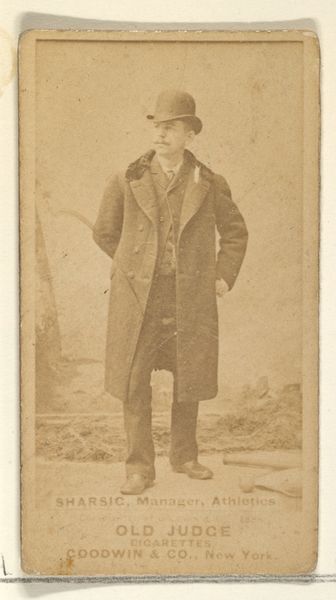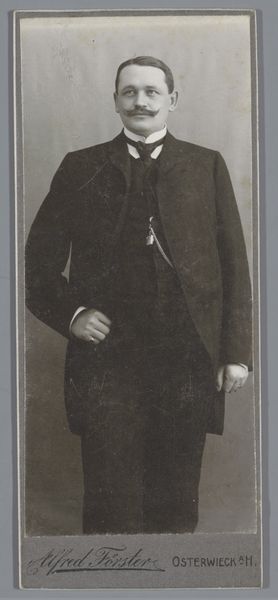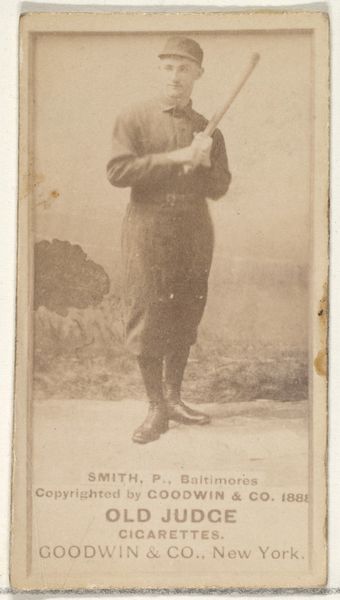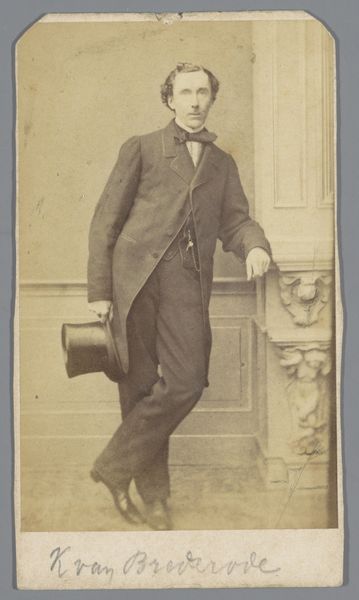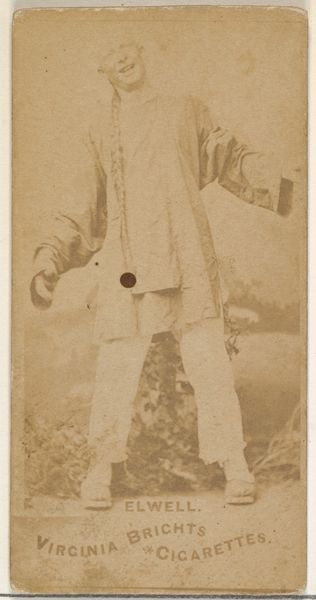
photography
#
portrait
#
garden
#
still-life-photography
#
landscape
#
photography
#
realism
Dimensions: height 90 mm, width 60 mm
Copyright: Rijks Museum: Open Domain
Curator: This striking portrait, whose origins are circa 1865 to 1900, depicts an unknown man standing in what appears to be a garden. Its realization is through photography. Editor: It has an oddly ethereal feel to it, doesn’t it? The light values create a haunting quality, almost ghostly, with a stark tonal contrast dominating the entire picture plane. Curator: I think the photograph speaks to the rise of the middle class and their aspirations for upward mobility during the late 19th century. The formal attire of the sitter points towards a desire to present a certain image to the world. Editor: Certainly, that would have been a major purpose. What I notice first is the sharp detail around the subject's face contrasting with the indistinct features of the background. The photographer guides our eyes deliberately. The light catches the edge of the vest emphasizing the texture of the fabrics and linear shapes of the suit. Curator: And consider the setting: a garden, often a symbol of cultivated leisure, though its unkempt appearance hints at a perhaps performative display of wealth. Editor: I also find the pose quite telling. With his hand tucked in his waistcoat, there's a rigidity to the pose, yet it looks entirely intentional for reasons now unknowable. Curator: Absolutely. Photographic portraits from this period often served as a means of social documentation, allowing individuals to claim their place within society's visual record. And they offer posterity clues about what society found to be important enough to display about themselves. Editor: There’s an inherent stillness. Considering photography was an expensive undertaking, I wonder what story lies behind that face and whether this stillness reveals how the sitter perceived himself or, indeed, wished to be remembered. Curator: That enduring mystery, I suspect, is what makes it such a captivating and enigmatic piece, despite our lack of knowledge about the man himself. Editor: Yes, even in the inverted color palette, the carefully calculated composition manages to evoke a sense of timeless contemplation.
Comments
No comments
Be the first to comment and join the conversation on the ultimate creative platform.
